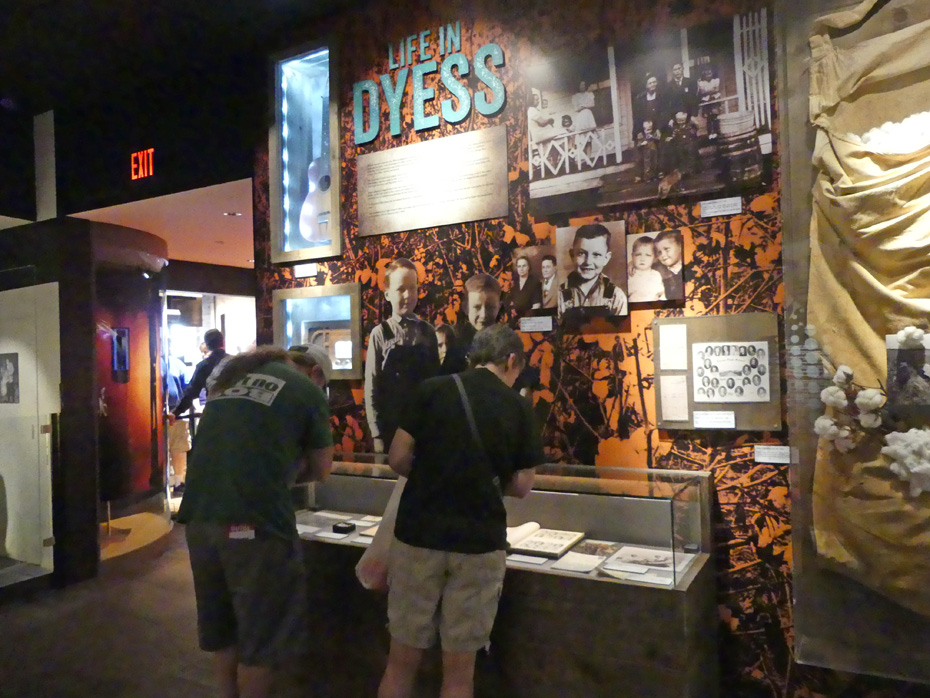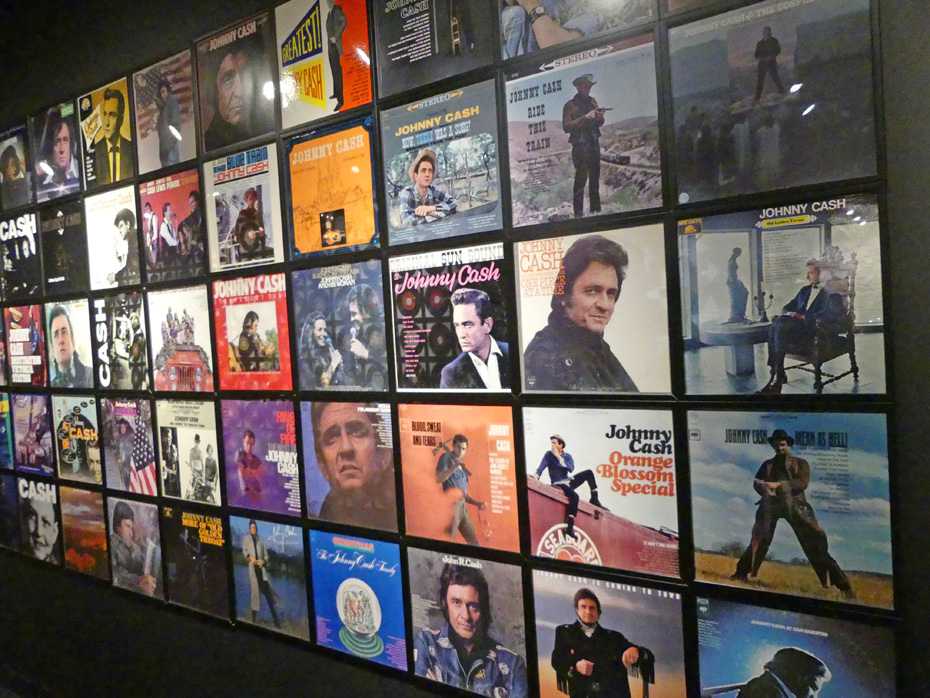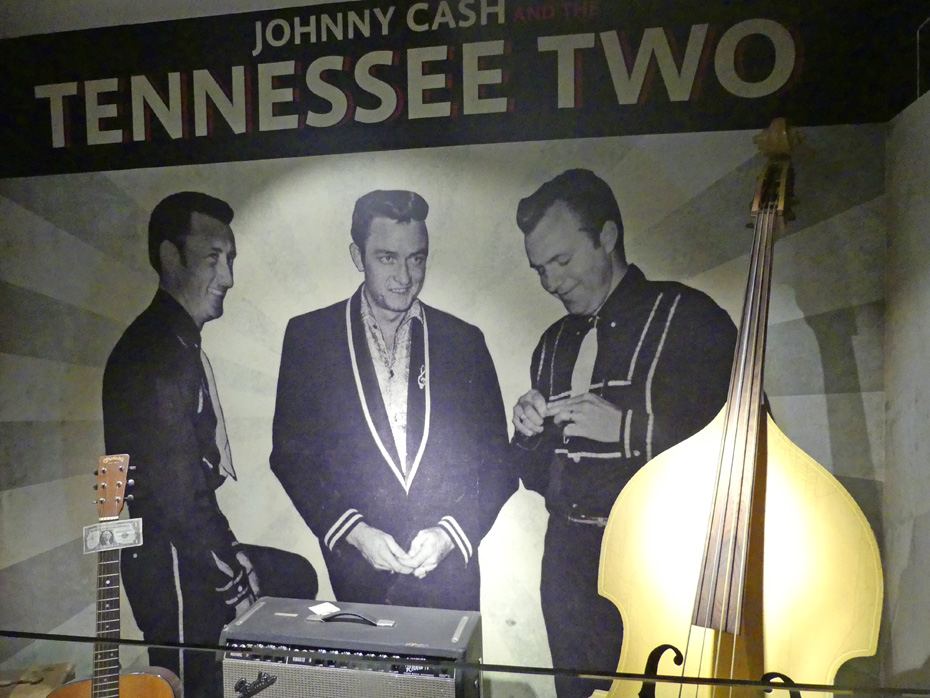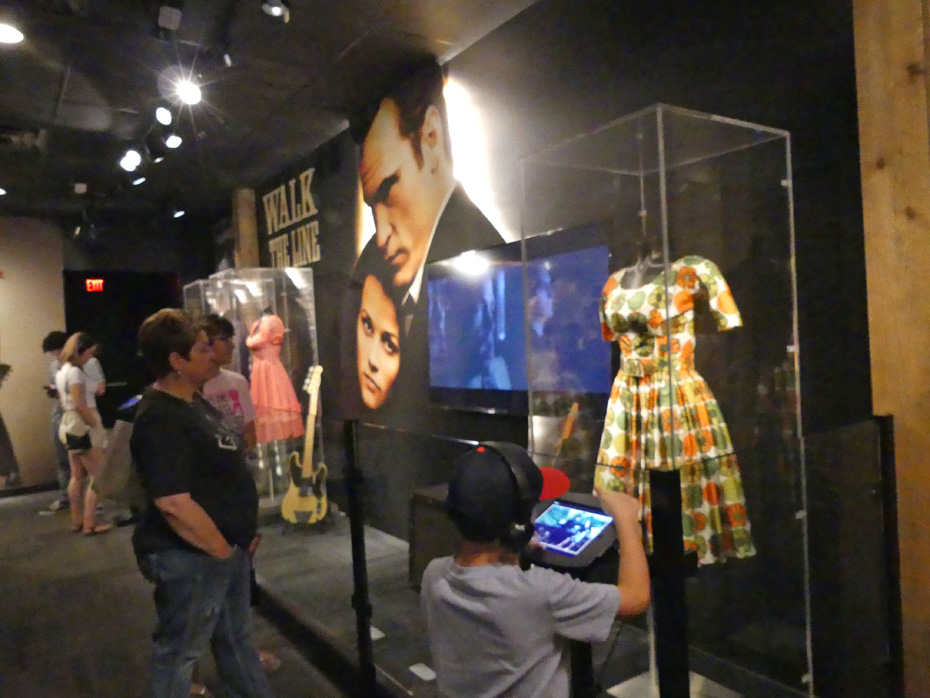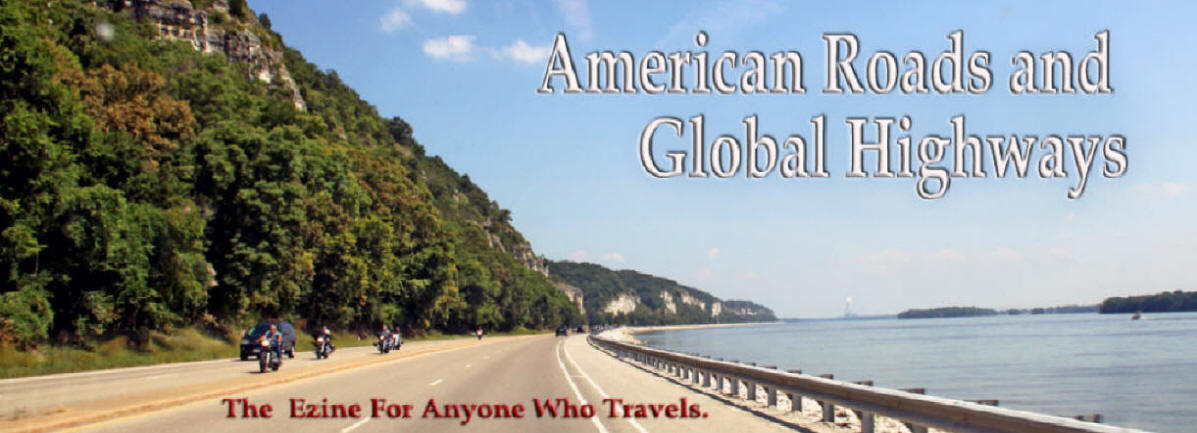
|
|
|
|
|
|
|
|
|
|
One of the greatest musicians of our time is memorialized in a museum in downtown Nashville. Only a handful of musicians have left as large a footprint on Country Music as Johnny Cash. The Johnny Cash Museum is rated number one music museum in the world and a must-see by Forbes, Conde' Naste, and National Geographical Traveler. There is a good reason why. This museum covers his amazing life from a kid in small town Dyess, Arkansas to his death in 2003. More than just his music it portrays the real man. He had his flaws but he never tried to pretend he was a saint; the museum doe s the same. By doing it they bring you a complete picture of the real Johnny Cash.
His part in the Highwaymen was a rebellion against Nashville's move towards more slick stylized music. The Highwaymen started the sub-genre known as Outlaw County Music. The museum displays art and caricatures as well as recordings of their music.
There are clips of Johnny Cash acting in films and TV dramas ranging from Gospel Road: A Story of Jesus, that he produced and financed himself in the early 70s, to roles he played such as Five Minutes to Live which stars Johnny Cash and Cay Forrester. Interestingly for a very low budget movie, the cast included two other well known names, Ron Howard and singer, Merle Travis.
An earlier movie, I Walk the Line, was a 1970 film starring Gregory Peck and Tuesday Weld where Johnny Cash did the soundtrack including his hit song, I Walk the Line. My personal favorite Johnny Cash movie was Murder in Coweta County, a 1983 made-for-TV movie based on a true story. It starred Johnny Cash as Sheriff Lamar Potts of Coweta County, Georgia. Andy Griffith played wealthy landowner/murderer John Wallace. June Carter played a strange local psychic, Mayhayley Lancaster. Another unusual cast member was Watergate-era attorney James F. Neal who was typecast as one of the lawyers during Wallace's murder trial. If you haven’t seen it, it's worth a download.
Johnny Cash, the author, is also represented there with Cash's three books. Papers in his own handwriting and other documents tell some of the writing motives and working behind Man in Black, Man in White and Cash: The Autobiography. It's also a little known fact that he also wrote poetry. A handwritten poem he wrote after June's funeral is displayed. As most people know Cash was a devoted humanitarian. If you were the underdog he stood up for you. His music related to that is best symbolized by his record, The Ballard of Ira Hayes, about a Native American who enlisted in the marines and was one of the men who raised the flag at Iwo Jima. The song tells how Hayes was later denigrated and at his death, "two inches of water in a lonely ditch was a grave for Ira Hayes."
The last exhibit, and for me, the most moving one, is the video of him singing Hurt. The chair he sat in and several other artifacts from the video are there also. Hurt was recorded just seven months before his death and just a few months before June Carter Cash's death. It is so unbelievably sad that no words can do it justice.
Thanks to modern technology, you can even get you picture taken with Johnny Cash. I have already framed mine and will always treasure it. The Johnny Cash Museum tells the story beautifully that Johnny Cash was so much more than a musician. He was a patriot, a rebel, a humanitarian and most of all one who stood for the downtrodden. He is the Man in Black for a reason as he says in his own words “I wear the black for the poor and the beaten down, livin' in the hopeless, hungry side of town, I wear it for the prisoner who has long paid for his crime, but is there because he's a victim of the times." For more info: https://www.johnnycashmuseum.com/
We'd love your comments!
|
Connect with us on:
American Roads
and | ||||||||
|
Public Disclosure--
Please Read The FTC has a law requiring web sites to let their readers know if any of the stories are "sponsored" or compensated. We also are to let readers know if any of our links are ads. Most are not. They are just a way to direct you to more information about the article where the link is placed. We also have several ads on our pages. They are clearly marked as ads. I think readers are smart enough to know an ad when they see one but to obey the letter of the law, I am putting this statement here to make sure everyone understands. American Roads and Global Highways may contain affiliate links or ads. Further, as their bios show, most of the feature writers are professional travel writers. As such we are frequently invited on press trips, also called fam trips. On these trips most of our lodging, dining, admissions fees and often plane fare are covered by the city or firm hosting the trip. It is an opportunity to visit places we might not otherwise be able to visit. However, no one tells us what to write about those places. All opinions are 100% those of the author of that feature column. . |
|||||||||
|
Privacy Policy/ Archives /
Contributors /
Subscribe to
American Roads Books by
Kathleen Walls /
Contact /
Sponsor or Advertise/ American Roads & Global Highways Home Page
|

